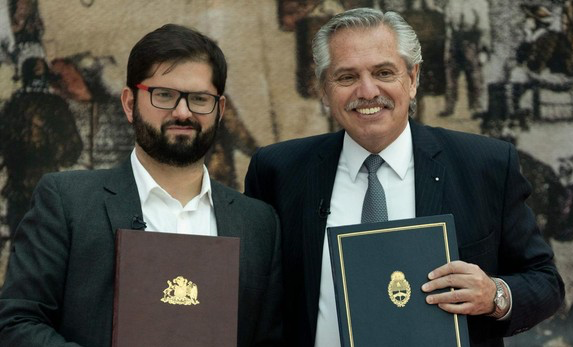Scenario: an Argentinean prison in the early 80s. Dark for prison, dark for sordid, dark for context, dark for denotations, dark for the stormy atmosphere. Time for visitors. On one side of the bars, the free man, Molinuevo; on the other, his friend for decades and for decades a partner in a medicine cabinet factory, Bonifatti.
They talk. The free one, with the melancholic joy of free Argentines. The prisoner, with the resignation of one who has understood that sins have to be paid for in some way; and although his – arrogance, adultery – are usually paid for in pain, humiliation, and pride, life decided to take them simply and cruelly with bars.
The reflection of a flash of lightning is appreciated. Seconds later, the corresponding thunder roars. Molinuevo, the free one, sentences: “With a good harvest we all save ourselves”.
Andrés Rivarola, a researcher at the Nordic Institute of Latin American Studies of the University of Stockholm, knew how to capture the power of that sentence; the idiosyncratic keys hidden behind it. And, no less important, its resounding timeliness. Indeed, it retains its value intact despite the 40 years that have passed since Sweet Money hit cinemas. The content of these lines is my exclusive responsibility, but I am indebted to Professor Rivarola for putting me on the track of that gold mine contained in just seven words.
In any case, why talk about all these issues precisely now? Because the oceanographers of Latin American politics have already started to proclaim the arrival of a new Pink Tide: Fernandez in Argentina, Boric in Chile, Arce in Bolivia, Castillo in Peru, possibly Petro in Colombia, probably Lula in Brazil… An announcement that is very interesting as a beginning of analysis; the problem is that it is usually also its end. The subject begins with a good title and ends in nothing more than a good title. As if the coincidence of presidents with similar ideological characteristics implied something by itself. As if it were linearly tied to predictable, even irrevocable consequences. And evident; so evident that it would not be necessary to name them. Therefore, in fact, they are not named. Great business for those who live by creating headlines; terrible horizon for those who aspire to understand them.
In other words: a number of presidents with converging proposals may concur over time; and then, what? What difference does it make if there are three, seven, or fifteen of them? Does this concurrence spontaneously increase the vigor with which they pursue their objectives? Will each president co-govern in all the other countries that draw a common line? Is there even a plan, a document, or a road map for joint action? And if there is not, if the coincidence does not crystallize into a constellation, what interest does it have as a mere asterism?
Of all the aforementioned questions, let’s stay with the initial one, which is the most open: what then? So, just as Molinuevo entrusted everything to that single harvest, the publicists of the Pink Tide 2.0 seem to entrust everything to asterism: “With a new Pink Tide we will all be saved”.
It is the culture of the miracle: that rain blesses our harvest and makes us rich once and for all; that a caudillo magically straightens our political destiny; that a bright international situation multiplies the price of our oil, our soybeans, our lithium; that a Pink Tide corrects forever the course of our economy, the status of our trampled regional identity and our specific geopolitical weight in the global scenario. That is nothing.
It is not that it is not known exactly how the new Pink Tide will operate to achieve its objectives; it is that it does not even seem to be of interest: what matters is that many presidents of the same political sign coincide. As if the important thing were to exhibit the symbolic power of numbers, and the effective articulation of this capacity was irrelevant.
Let us make, however, three assumptions that allow us to jump directly to the end of a successful ten or fifteen-year Pink Tide.
First assumption: the heralds of Tide 2.0 have a free pass for an all-encompassing optimism because they did not take note of what happened with version 1.0. Of the obstacles encountered by its member presidents, both within and outside each country. Of the lack of capacity and lack of political will. Of the appearance of unexpected collateral effects that forced to paralyze certain reforms, to reverse others, to limit the third ones to discourse and make-up. Of the ambition for power, internal disputes, betrayals, and interests -which exist around the presidents of the Pink Tide as around any other head of state-. Of the distance between campaign promises and real politics. Let us suppose, then, that having pointed out none of this, it is possible to receive the new Tide with expectations intact.
Second assumption: that, once installed in power, all the presidents of the new wave really had shared interests, and that they managed to reach concrete agreements to materialize them.
Third assumption: after two or three lustrums of Pink Tide II, the economies concerned flourish, national and regional identities stand proudly before the world, and Latin America has become a key player on the global political chessboard.
What would happen after those ten to fifteen years? As we get closer to the answer, we are getting Molinuevo’s face. Let’s take a little detour to explain it.
What is normal, what is expected, and what is desirable in a democracy is that after two or three governments of a certain political color, the alternation of power leads to one of the opposite sign. Use whatever labels you want: left and right, progressivism and conservatism, socialism and (neo)liberalism… in a democratic system, they take turns in the exercise of power. There is an alternative, of course: that instead of Molinuevo we get Daniel Ortega’s face. In that case, a president can remain in power for life and his policies remain intact.
But in the case of liberal democracies, which is the one we are interested in, the alternation in power allows the radical transformation, repeal, and retraction of the policies of the previous government. There is only one mechanism to prevent this from happening: that the most important measures, those that define the national future, be agreed upon by the main political groups of the country.
That the major issues be addressed through State policies, which will be respected by the opposition when it ceases to be the opposition. That they will be respected because they were not imposed on it by the force of the majority at a given moment, but because the opposition had participated in their elaboration. That they will be respected because these rules also include some of its points of view, some of its demands. That they will be respected despite how expensive it would be, once in power, to dynamite the great bridges built in the past.
Does the reader begin to get an idea of what Molinuevo’s face looks like? It is the face of “With a good Pink Tide we can all save ourselves”. The face of someone who hopes that what the new Pink Tide does, no one will ever undo it again.
But that cannot be. Moreover, it is impossible: to expect a Pink Tide to save us is as absurd as expecting a Blue, Grey, or Green one to do so. It is not a question of political color; the problem consists in expecting from these governments the imposition of certain policies, instead of expecting the achievement of long-term agreements with the rest of the national political arc. If the former happens, the result is written: such measures will last as long as the government lasts.
As an oceanographer would say: let us not forget that a flowing current is always, always, always followed by an ebbing one.
Translated from Spanish by Janaína Ruviaro da Silva












